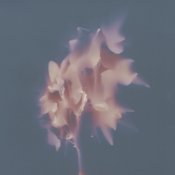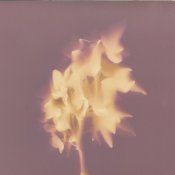Erik Petersson
Member
Hello,
I am trying lumen printing, which is great fun. Have a stash of Agfa Brovira long expired which gives interesting enough results. Here are a couple of examples (the purple and yellow one is after fixing).


Ilford Ilfospeed 3.1M Glossy gave very bleak pictures.

When I looked through APUG, I found various advice on how to preserve pre-fixing colours, or how to generally enhance colours. Either toning, or chromoskedasic stabilizer. Perhaps this is what that is:
http://www.freestylephoto.biz/10947-Arista-Premium-BW-Chromo-Stabilizer-32-oz.-For-Chromoskedasic
What would you recommend to start with?
The pre-fixing picture could of course be preserved through scanning, a digital procedure which might be a hit in the far future, who knows. But I prefer to work with the exposed paper itself.
I have fixed my pictures in ordinary Ilford rapid fixer. Will this make the picture stable, so that it could be displayed on the wall?
Another question, what papers would you recommend that I buy? The internet is full of different variants.
Thanks in ahead for any advice!
/Erik
I am trying lumen printing, which is great fun. Have a stash of Agfa Brovira long expired which gives interesting enough results. Here are a couple of examples (the purple and yellow one is after fixing).


Ilford Ilfospeed 3.1M Glossy gave very bleak pictures.

When I looked through APUG, I found various advice on how to preserve pre-fixing colours, or how to generally enhance colours. Either toning, or chromoskedasic stabilizer. Perhaps this is what that is:
http://www.freestylephoto.biz/10947-Arista-Premium-BW-Chromo-Stabilizer-32-oz.-For-Chromoskedasic
What would you recommend to start with?
The pre-fixing picture could of course be preserved through scanning, a digital procedure which might be a hit in the far future, who knows. But I prefer to work with the exposed paper itself.
I have fixed my pictures in ordinary Ilford rapid fixer. Will this make the picture stable, so that it could be displayed on the wall?
Another question, what papers would you recommend that I buy? The internet is full of different variants.
Thanks in ahead for any advice!
/Erik



 )
)
